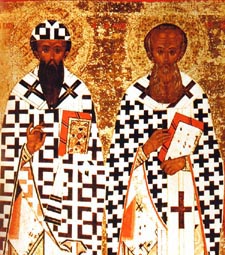Saint Athanasius and his defence of Nicea
The doctrinal definition of the Nicene Council was not universally accepted throughout the Church for a long time. The Arian controversy raged for over five more decades, and because several Christian emperors in this period gave their support to the Arianizers, the defenders of the Nicene Faith were greatly persecuted. With imperial support, Church councils were held in Milan, Sirmium, Rimini, Seleucia, and elsewhere, to try to articulate the mystery of Christ’s divinity and humanity, but all with varying degrees of Arian influence.

Saint Athanasius (c. 298–373) attended the Nicene Council as a deacon of the Church in Alexandria. Though only 27 years old, he was a leader at that council in promoting the crucial word homoousios as most fitting to affirm the truth that the Son of God has the same uncreated divine nature as God the Father.
Athanasius became Bishop of Alexandria in 328, upon the death of Saint Alexander. As the anti-Nicene party, led by Bishop Eusebius of Nicomedia, gained strength, Bishop Athanasius was one of the first to be attacked through slander and intrigue. This group managed to get him exiled from his see in 335. Altogether, this fearless champion of Nicene Orthodoxy suffered exile five times for his valiant and eloquent defense of the Christian Faith. Near the end of his life, his pastoral, forgiving outreach to his former enemies greatly helped to bring Arianism to an end. For all this and more, he is revered in Church Tradition as Saint Athanasius the Great.
